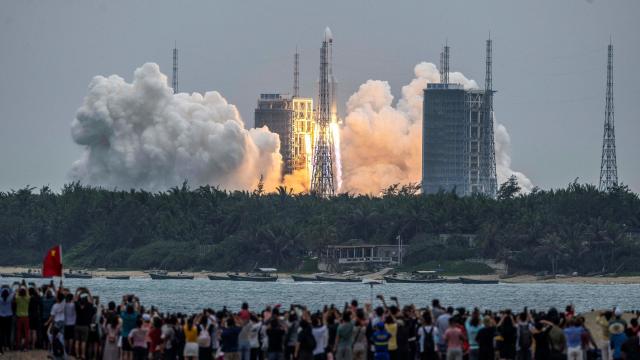China today launched the main module of its new space station into low Earth orbit. The ambitious project is set to be China’s answer to the International Space Station, which has never included China in its membership.
The 16.76 m core module is called Tianhe, or Harmony of the Heavens. It blasted off from the Wenchang Launch Centre in Hainan in the wee hours of Thursday morning, late Wednesday night for the United States. It launched aboard a 57.91 m-tall Long March-5b Rocket, which has been the flagship launcher of the program since 2016. This is the first of 11 launches planned to see the finished product of the Chinese Space Station in operation by late 2022.
Should all go according to plan, Tianhe is the section of the station that will actually house Chinese astronauts, for stints of up to half a year. The next launches will send up two experimental modules, which will attach to either side of Tianhe, four cargo shipments, and four crewed missions, the first of which is slated for June. Tianhe has a total of five docking ports, which could be expanded to six.
The core module is the largest spacecraft yet developed by China, according to Chinese state media. The total station weight will be around 66 tons. While a far cry from the 450 tons the ISS was at its completion in 1998, the main goals of the space station — conducting experiments in space and exploring how properties of space affect the results — doesn’t really require a ton of room.
China’s other recent pursuit in space include its Mars mission (launched last year on a rocket similar to the one that just put Tianhe into orbit). The rover associated with the mission is expected to set down on Mars around mid-May, just a few months after NASA’s Perseverance rover landed in Jezero Crater in February. Just a couple of days ago, China’s NEO-1 satellite went to orbit; it’s effectively a space miner, looking to snag space debris with a net for analysis.
Though the assembly of the Chinese Space Station was delayed, most significantly by a 2017 launch failure, state media reports that the goal of completing the station’s construction remains fixed for late next year.
